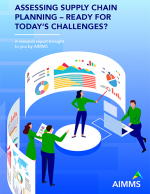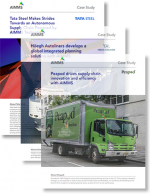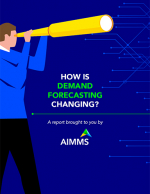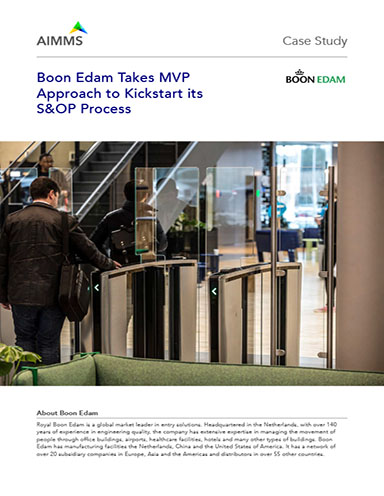Boon Edam Takes MVP Approach to Kickstart its S&OP Process
Boon Edam was looking to shift towards a combined business model of “made to stock” and “assembly to order” - where modules which could be placed into a configuration requested by the customer would be ready for production.
Boon Edam was looking to shift towards a combined business model of “made to stock” and “assembly to order” - where modules which could be placed into a configuration requested by the customer would be ready for production.
At the same time, they were trying to optimize the workload between factories to boost manufacturing efficiency.
Their financial reporting process was based on a lot of assumptions.
Their forecast would be based on gut feel, posing great risks for the company.
They decided to embrace S&OP and build an AIMMS-based support system to enable this process.
The company realized it did not have perfect data quality but was looking to start building a solution they could improve in incremental steps, following a Minimum Viable Product (MVP) approach.
Solution
Boon Edam worked with ORTEC, an AIMMS implementation partner, to develop an AIMMS-based S&OP support App.
They have a planning horizon of 3 months which involves 10 people across different regions.
Every month, supply chain managers from different distribution support centers submit an Excel template completed for uploading into the AIMMS application.
Forecasts are then reviewed by the management team in a single view that incorporates demand, capacity, and inventory.
This allows the team to make crucial decisions based on data.
For instance, they use statistical forecasting in AIMMS to determine how much demand they should approve based on the calculations done within the tool.
The company is now working to improve data quality and consistency by connecting AIMMS with their SAP ERP.
Results
Boon Edam’s team now has better insight into the data provided by their different sales subsidiaries and continues to improve forecast accuracy.
Boon Edam’s Aron Waas, Global Supply Chain Director, stated:
“We now have a much more objective way of interpreting the demand data. This opens up discussions and gives us much more clarity about our processes. We chose AIMMS over SAP’s S&OP tool because AIMMS enables us to build different scenarios and meet our unique needs. With AIMMS, we could also learn during the development of the tool. We took ownership of it. That’s a big advantage from a change management and stakeholder management perspective.”
What’s Related




Favorites





